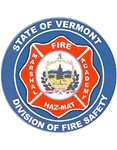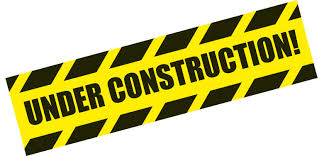This page is under revision. The information displayed on this page is in the process of being updated and may not be fully accurate.
Fire and Emergency Service Instructor I
This program is based on NFPA 1041: Standard for Fire Service Instructor Professional Qualifications. The program is designed for individuals who want to develop the knowledge and ability to deliver instruction effectively from a prepared lesson plan, including instructional aids and evaluation instruments; adapt lesson plans to the unique requirements of the students and the authority having jurisdiction; organize the learning environment so that learning is maximized; and meet the record-keeping requirements of the authority having jurisdiction.
Program Length: Approximately 40 hours
Prerequisite: High School diploma or equivalent, 3 years experience in fire or emergency services, Firefighter I Certification/Qualification or EMS Certification.
Firefighter I
Firefighter I introduces firefighting concepts, practices and techniques necessary for safe operation and success within the fire service. Based on the Firefighter I objectives from NFPA Standard 1001, Standard for Fire Fighter Professional Qualifications, this program develops knowledge, skills and abilities for the following topics: firefighter safety, personal protective equipment, self-contained breathing apparatus, communications, incident command system, traffic incident management, fire behavior, building construction, fire extinguishers, tools and equipment, ropes and knots, forcible entry, ladders, search and rescue, ventilation, water supply, fire attack and foam, firefighter survival, salvage and overhaul, wildland fires, fire suppression, and CPR and first aid. This program also includes knowledge and skills based on the objectives of NFPA 1072, Standard for Competence of Responders to Hazardous Materials and student will gain Hazardous Materials Operations certification.
Approximate Program Length: 184 hours
Prerequisites: Students must be 18 years of age by the start of the course in order to enroll.
Firefighter II
Firefighter II introduces firefighting concepts, practices and techniques necessary for safe operation and success within the fire service. Based on the Firefighter II objectives from NFPA Standard 1001, Standard for Fire Fighter Professional Qualifications, this program builds upon the knowledge and skills obtained during Firefighter I. In addition to expanding upon the Firefighter I skill set, students will develop knowledge, skills and abilities for the following: incident reporting, foam and flammable liquids fires, pre-incident planning, fire prevention and public education, vehicle rescue and extrication, assisting special rescue teams, fire protection systems, fire cause determination awareness, and coordinated fire attack. Students will participate in live fire exercises focusing on flammable liquid fire suppression, flammable gas fire suppression, and coordinated structure fire attack.
Prerequisites: Current Firefighter I and Hazardous Materials Operations Certification
Approximate Program Length: 92 hours
Fire Officer I/II (85 hours)
This program provides the current Fire Officers and aspiring officers timely information that aids in the performance as a company officer. This educationally sound, objective-based course addresses and complies with the National Fire Protection Association Standard, NFPA 1021, Standard for Fire Officer Professional Qualifications, 2020 Edition. Topics covered include developing the proper mind set, accountability and responsibility, cultural diversity, safety and wellness, crew resource management, public relations, functional leadership, incident command, affirmative action issues, budgeting process, strategic planning, and strategy and tactics. The program also includes a research component where the participants complete 12 research projects on assigned topics based on their own fire departments protocol, policies and practices. An additional 40 to 80 hours of program work is required in addition to the course hours listed above.
Prerequisite: National certifications in Responder Hazardous Materials Operations, Firefighter II, and Fire and Emergency Services Instructor I. NIMS Certificate: ICS - 200
Hazardous Materials Awareness (8 hours)
This entry-level class is designed for all personnel who may encounter a hazardous materials situation. The program learning objectives are based on the OSHA 29 CFR 1910.120 regulation and meet the NFPA 472 Standard on Professional Competence of Responders to Hazardous Materials / WMD Incidents. Students will receive an introduction to hazardous materials, be able to describe the process for analyzing an incident, and describe the procedure for implementing a response. Topics include detecting hazardous materials, informal detection methods, facility and transportation markings, DOT hazard classes and conditions, container identification, Safety Data Sheets and shipping papers, terrorism and hazardous materials, identifying hazardous materials, using the Emergency Response Guidebook, implementing the response, protective actions and scene safety, and notification procedures. This program is designed to meet the needs of Law Enforcement, Emergency Medical Service providers, municipal officials, public works employees, others who may encounter hazardous materials in the course of their duties. Successful completion of a written exam is required for certification.
Program Length: 8 hours
Prerequisites: None
Hazardous Materials Operations (28 hours)
This program provides the student with the basic skills necessary to safely and effectively manage the on-scene operations involving the uncontrolled release of dangerous chemicals. As such it focuses on those individuals in local jurisdictions who respond to releases or potential releases of hazardous substances as part of the initial response to the site for the purpose of protecting nearby persons, property, or the environment from the effects of the release. They are trained to respond in a defensive fashion to contain the release from a safe distance, keeping it from spreading, and preventing exposures. The course is designed to meet the training responsibilities as outlined by OSHA, CFR 1910.120 and NFPA 472 for the Operations Level.
Prerequisite: Participants must be proficient and qualified at donning SCBA.
Pumping Apparatus Driver/Operator (PADO)
This program presents general principles of pump operation, along with the application of those principles wherever feasible. Guides driver/operators in the proper operation and care of apparatus. Overview of the qualities and skills needed by a driver/operator, safe driving techniques, types of pumping apparatus, positioning apparatus to maximize efficiency and water supply, fire pump theory and operation, hydraulic calculations, water supply considerations, relay pumping principles, water shuttle procedures, foam system operation, and apparatus maintenance and testing. addresses the pumper operator skills needed to move water from a pressurized hydrant or static source to the fireground. Rural water supply techniques, concepts dealing with static water sources and moving the water to the fireground by pumper relay or tanker shuttle are presented and hands-on job skills are practiced. Large diameter hose equipment and techniques are discussed and included in practical activities.
Although Emergency Vehicle Driver Training is a required component of this program, driving skills will have to be validated by the Chief or designated Training Officer of your home fire department in order to complete this program.
- PADO Module 1: Emergency Vehicle Operations and the Operator (19 hours): Includes Emergency Vehicle Driver Training, National Traffic Incident Management, and Basic Fireground Functions.
- PADO Module 2: Fire Streams and Hydraulics (15 hours)
- PADO Module 3: Fire Pump Positioning, Theory, and Operating (15 hours)
- PADO Module 4: Water Supply Practices (12 hours)
Prerequisites: Students must be a minimum of 18 years of age, be affiliated with a fire department, and possess a valid driver's license.
Apparatus Requirements: Students will be required to bring pumping apparatus from their home department for practical exercises. This must be arranged with your Chief of Department prior to enrolling in the program.
Minimum class size is 5 students, maximum class size is 12 students.


